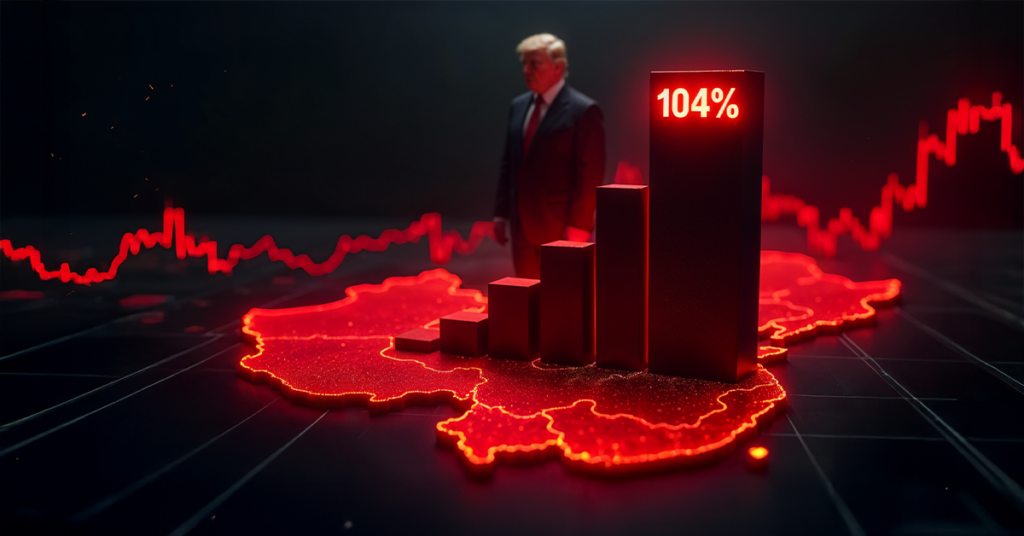Daily Fundamental Update: Trump’s Tariffs on China Jump to 104% Igniting More Recession Fears

Key Takeaways
- Trade war continues between the U.S. and China with the overall tariffs on Chinese exports reaching 104%.
- European stocks are hit hard with the reciprocal tariffs as indices drop 3% today.
- 10-Year treasury yields rise despite ongoing trade war.
The trade war heats up between China and the U.S.
A new round of steep tariffs by President Donald Trump took effect Wednesday on global imports.
The tariffs range from 11% to 84% across 86 countries, exceeding the 10% base rate imposed over the weekend.
China faces the highest rate at 104%, including previous duties and a new 50% increase. China’s Commerce Ministry warned they would “fight to the end.”
Following Trump’s April 2 announcement, U.S. stocks fell for four straight days. Despite market concerns, Trump stated, “America is going to be very rich again very soon.”
Asian markets declined as tariffs took effect, with South Korea entering a bear market. India cut its policy rate to 6% after receiving a 26% tariff.
Oil prices fall to their lowest point in four years
Oil prices hit a four-year low Wednesday amid escalating U.S.-China trade tensions and recession fears.
After a brief recovery, prices fell again when Trump increased China tariffs by 50%, straining relations with the world’s largest oil importer.
Brent futures fell 3.8% to $60.46/barrel, while WTI crude dropped 4.1% to $56.69/barrel despite lower U.S. inventories, which usually increases the price of oil.
Following Trump’s reciprocal tariffs and the response from China, the probabilities of witnessing a recession in 2025 have increased noticeably, potentially further weakening oil demand as a result.
US indices continue to decline after momentarily spike
U.S. stocks reversed sharply Tuesday, erasing an early 4% rally in the S&P 500 and Nasdaq. Markets initially shrugged off concerns about Trump’s tariffs before selling off later in the day.
The Dow fell 320 points (0.8%), Nasdaq dropped 2.1%, and S&P 500 declined 1.5%, nearing bear market territory.
This continued last week’s post-tariff announcement decline, with the S&P 500 and Nasdaq now down over 12%. The decline followed Monday’s brief market recovery.







